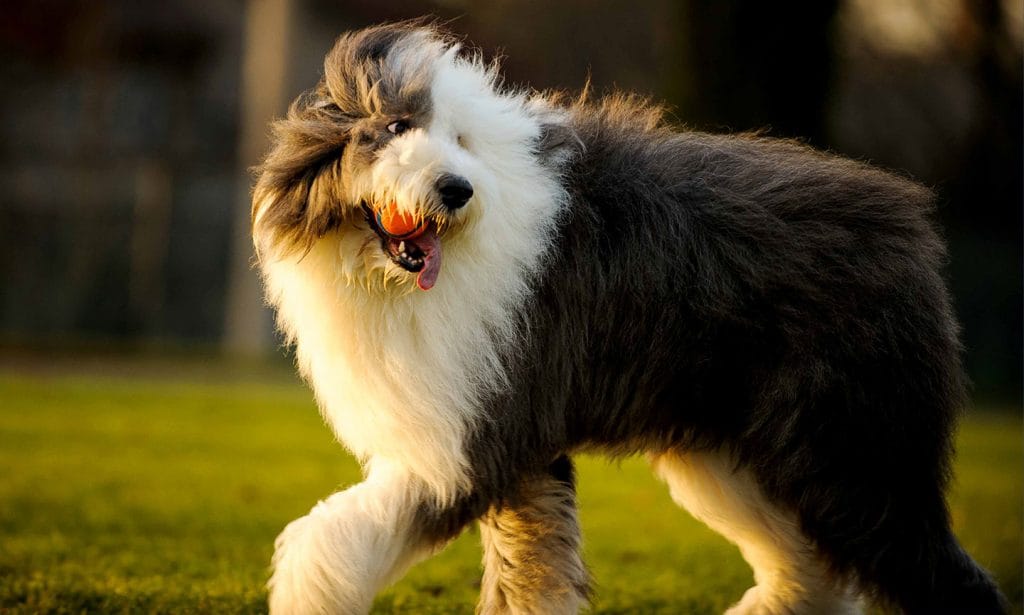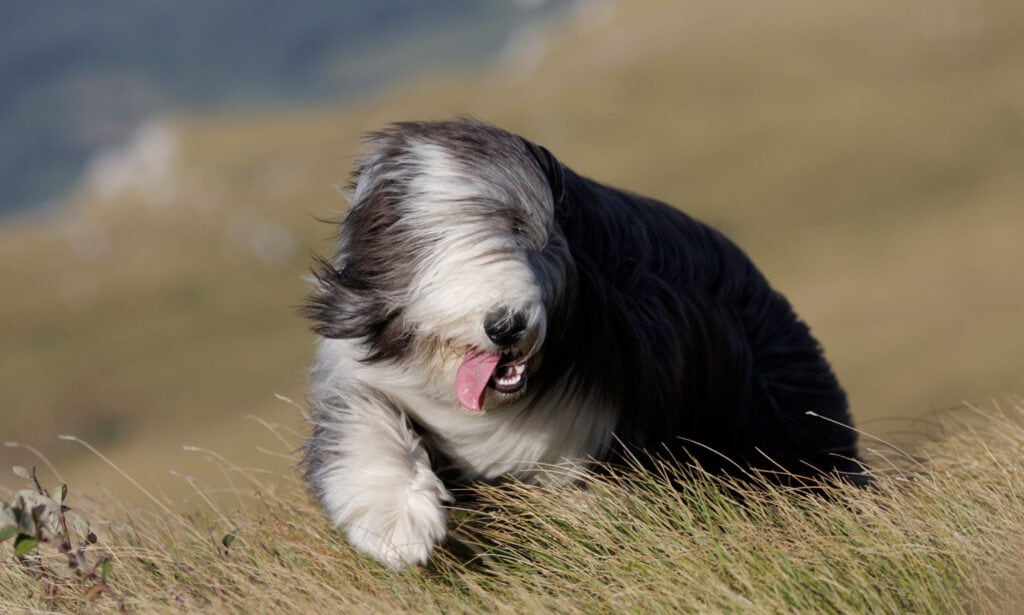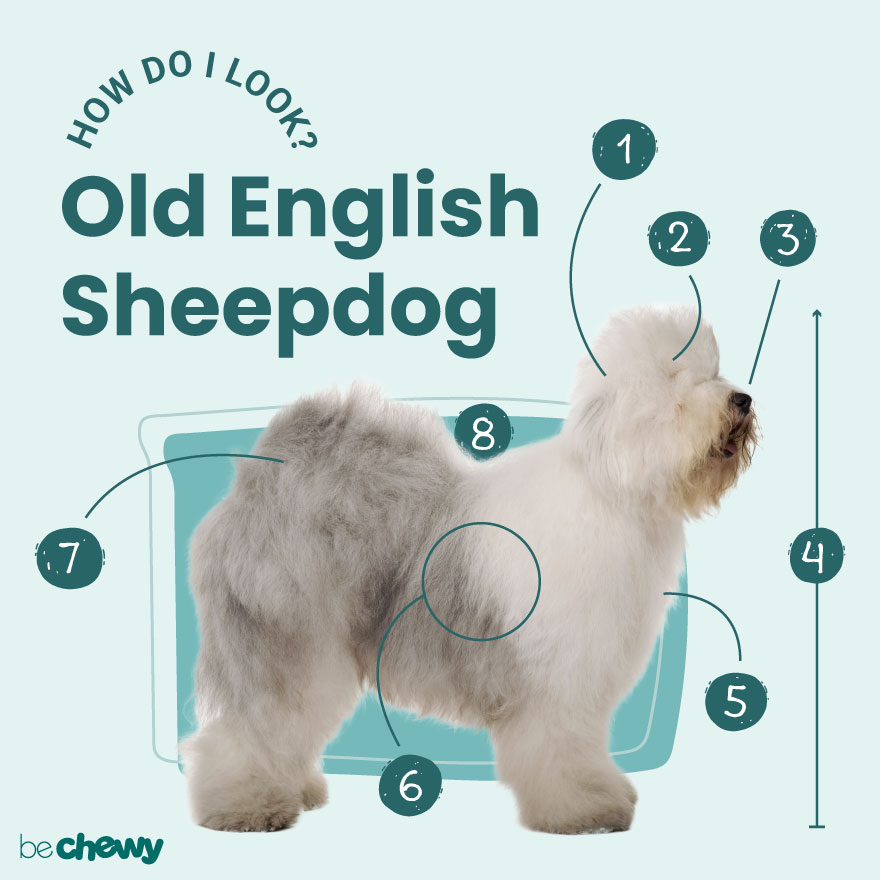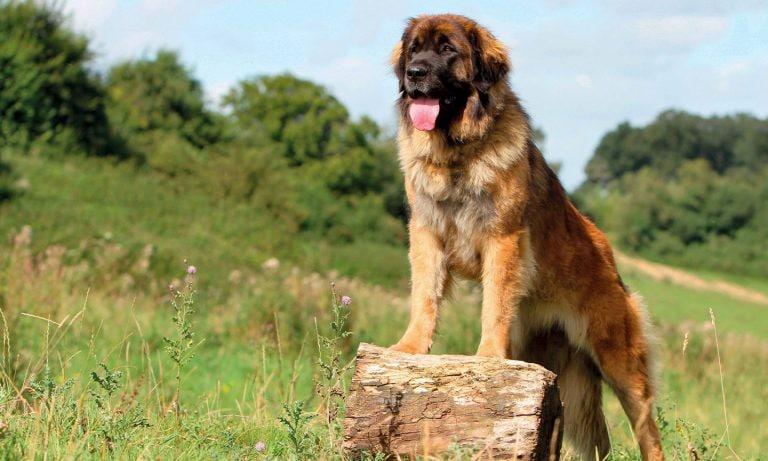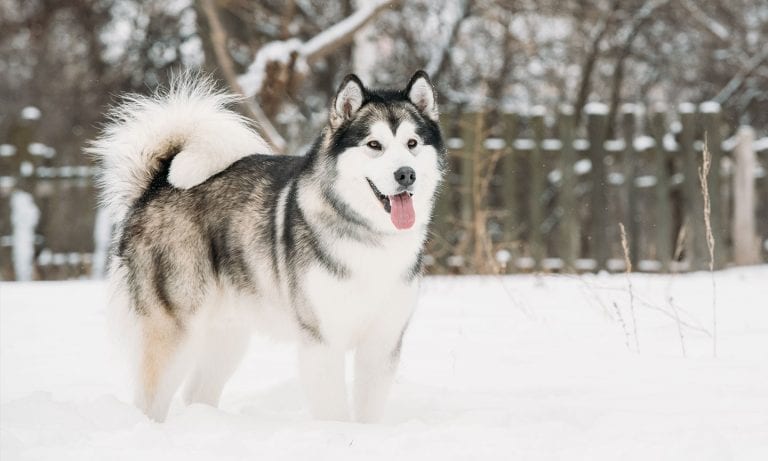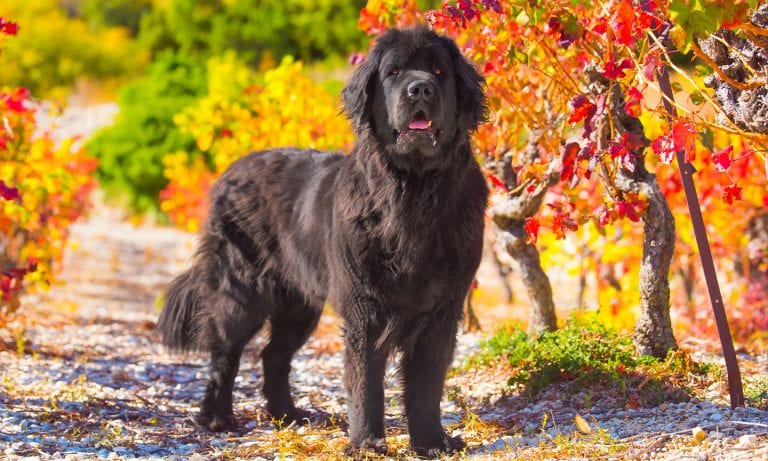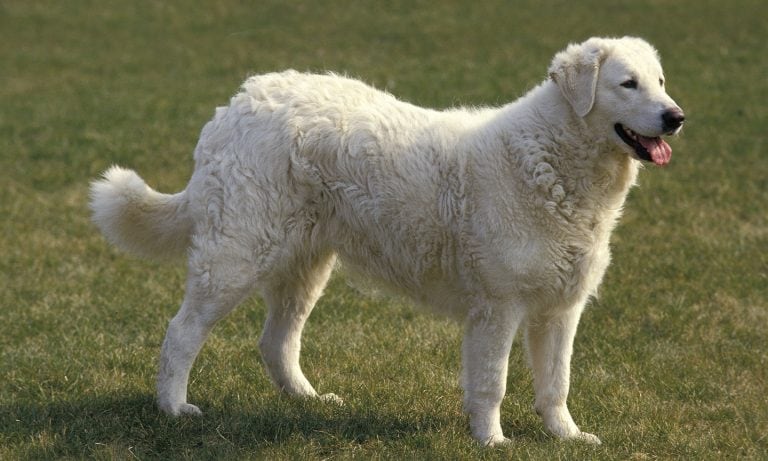Sweet and charming with lots of energy, the Old English Sheepdog is just as content going on a jog with you through the neighborhood as they are competing in a herding trial. Give this fluffy pooch plenty of space with people who love them, and you’re in for years of laughs and complete devotion—and possibly vacuum canisters full of fur. The Old English Sheepdog may need some extra love to maintain their hair, which just might be more luscious than yours, but their gentle disposition is worth the effort.
Breed Snapshot
Temperament:
GentleIntelligentActiveCoat Color:
Grizzle And WhiteBlue And WhiteBlue Gray And WhiteBlue Merle And WhiteGray And White
Best For
Old English Sheepdogs are affectionate and playful pups who require regular grooming and moderate exercise. They thrive in spacious homes with experienced pet parents who appreciate their herding instincts and can provide plenty of social interaction.
Old English Sheepdog Temperament
Old English Sheepdogs are gentle and active and make great family dogs. They’ve been described as clownish, bounding goofily when excited, and have a zest for life while maintaining an even temperament. They can be protective, giving a distinct bark to head off strangers. Get in their zone of trust, though, and you’ll have yourself a friendly, loyal, and devoted playmate.
Socialization (introducing them to different people and experiences) is key to compatibility with others. Every dog is an individual, and temperament and personality will vary from dog to dog, but this breed generally can get along with young children with lots of exposure and positive reinforcement; otherwise, they may try to “herd” them or nip at them as they would with sheep. Children should also be taught how to respectfully play with dogs. The OES can get along with cats with early introductions and, again, the proper socialization. The same goes for other dogs—the more they’re around other friends, the better they do. Luckily, they can be adaptable and easy-going, freely sharing their affection with their family.
Sheepdogs take their job as professional herders very seriously and love keeping busy, so ensure you’re providing lots of opportunities for stimulation. They catch on quickly and can get bored with the same old commands, so mix it up a little during your training sessions.
How to Care for a Old English Sheepdog
Old English Sheepdogs need a pet parent with plenty of time to dedicate to caring for this energetic, lovable bundle of fur. Their plush double coats need considerable grooming. They shed all year round, too, so you’ll need to up your vacuuming game. This intelligent breed can be strong-willed, so someone who understands them and knows how they tick will be their ideal trainer. Plan on lots of regular exercise, and don’t be surprised if they enjoy practicing their herding skills on you.
Old English Sheepdog Health
Old English Sheepdogs have a life expectancy of 10 to 12 years but are prone to a few health issues. A pet parent needs to know about the common health conditions that can affect their dog to help them live the longest life possible.
- Hip Dysplasia: As with many large dog breeds, the Old English Sheepdog is at an increased risk for hip problems. In hip dysplasia, the ball and socket of the hip joint don’t fit correctly and can rub and grind against each other, leading to lameness, pain, stiffness, and eventually arthritis. Treatments vary depending on the severity but can include weight management, joint supplements, pain medication, and surgery.
- Eye Disease: The Old English Sheepdog is prone to eye conditions such as cataracts and glaucoma, which can cause blindness if not treated; and progressive retinal atrophy, which can also lead to blindness and is untreatable. Entropion is a condition where the dog’s eyelid turns inwards, and the eyelashes rub against the eyeball, which irritates the cornea and causes discomfort. The treatment depends on the severity but can include pain medications or surgery.
- Dilated Cardiomyopathy (DCM): The Old English Sheepdog is prone to DCM, which is a heart condition where the heart has trouble pumping blood to the body because the heart has grown enlarged and weakened. This is a genetic condition seen in larger dogs like the OES, and symptoms include trouble breathing, weakness and collapse. If your vet has concerns about your pet’s heart, they will likely refer you to a veterinary cardiologist for an echocardiogram (ultrasound of the heart) to determine the cause.
- Deafness: Old English Sheepdog puppies can be prone to deafness, especially if they are all white. There is no treatment for deafness, but dogs with hearing issues can still live happy, healthy lives.
- Hypothyroidism: Hypothyroidism is an endocrine disease in which the thyroid glands do not produce enough thyroid hormone. Symptoms commonly include lethargy, weight gain, and hair loss. Diagnosis is typically by blood test and treatment is most often daily oral medication.
Old English Sheepdog History
The Old English Sheepdog originated in the 1700s, so unlike their name, they aren’t an ancient breed like the Xoloitzcuintli. They aren’t fully English either—their ancestral history includes European, Scot, and Russian. The Scottish Bearded Collie might have played a role in this pup’s development. And you know what else? They aren’t even considered a sheepdog! Specifically, Old English Sheepdogs in the 18th century were known as “drover’s dogs” as they helped move sheep and cattle long distances from the fields to the markets instead of herding them from the field to the barn like other sheepdog types. Fun fact: Their size, coloring, and shaggy fur helped them to blend in with sheep.
Also known as the Bobtail, this breed was promoted in the US by an industrialist from Pittsburgh around the time of their American Kennel Club recognition in 1888. Within 20 years, Old English Sheepdogs settled into the homes of five of the ten wealthiest American families, Vanderbilts and Guggenheims included.
In 1914, the OES won Best in Show at the Westminster Kennel Club Dog Show. The Old English Sheepdog also made it big in Hollywood with the 1959 Disney classic “The Shaggy Dog.” You probably have also seen this shaggy dog (in animated form) in “The Little Mermaid” and “101 Dalmatians.” The Old English Sheepdog is quite the movie star!
Looking to add an Old English Sheepdog to your family? You can find reputable breeders on the American Kennel Club’s website, where the average Old English Sheepdog puppy costs between $1,000 to $2,000. For that, you usually get a dog screened for health and temperament issues, and they might come with pedigree papers. You can also reach out to an OED rescue organization, keep an eye out for the breed at your local animal shelter, or search Chewy’s database of adoptable dogs in your area.
FAQs
Do Old English Sheepdogs shed?
Yes, Old English Sheepdogs are heavy shedders. They need three to four hours of grooming a week to keep the fur tumbleweeds under control in the home. Of course, this is not all that different from other dogs in the Herding group with long fur and double coats. (Dogs in the Herding group were born to control the movement of other animals.) You just need an understanding of how to care for it.
How long do Old English Sheepdogs live?
Old English Sheepdogs have a life expectancy of 10 to 12 years. You can help your pup live a long and happy life with the proper diet, exercise and routine vet visits.
How big do Old English Sheepdogs get?
Old English Sheepdogs can get pretty big. They can weigh up to 100 pounds and stand at least 21 inches tall at the shoulder.
Are Old English Sheepdogs smart?
Yes, Old English Sheepdogs are smart. They can also be independent, which can sometimes look like stubbornness. But that just means they need an experienced pet parent who understands this breed’s traits.
Do Old English Sheepdogs bark a lot?
Yes, the Old English Sheepdog does tend to bark, sometimes a lot. They need a lot of socialization and training at a young age to help combat this quality as much as possible. But hey, you’ll always know when someone is at the door.
What are the most common Old English Sheepdog mixes?
- Old English Sheepdog-Poodle mix (Sheepadoodle)
- Old English Sheepdog-Golden Retriever mix (Golden Sheepdog)
- Old English Sheepdog-Labrador mix
- Old English Sheepdog-Border Collie mix
- Old English Sheepdog-Australian Shepherd mix
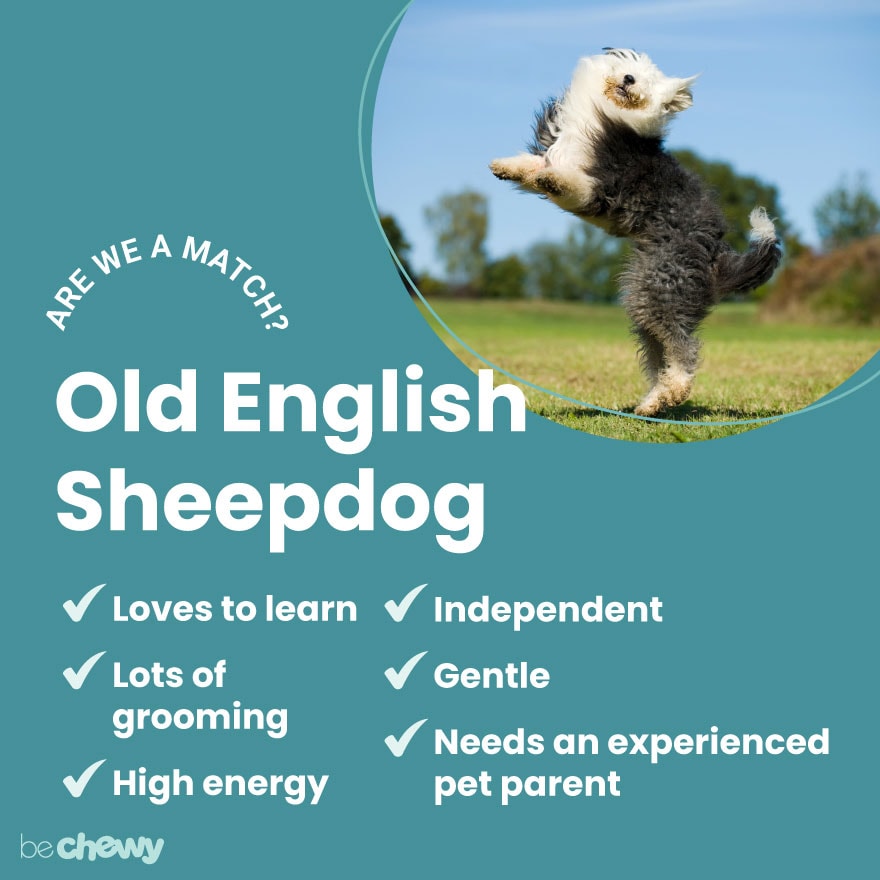
Top Takeaways
Old English Sheepdogs are sweet and gentle and need a ton of exercise. They have a fierce intelligence that combines with their independence to make a dog who’s just as spectacular in a herding trial as they are playing a game of hide-and-seek with their pet parent.
Expert input provided by veterinarian Georgina Ushi Phillips, DVM of the We Love Doodles website, and Nicholas DeRoma CVT, CDBC, CPDT-KA Consultant, Veterinary Technologist, and Canine Behavior Specialist.
Breed characteristic ratings provided by Dr. Sarah J. Wooten, DVM, CVJ, a veterinarian at Sheep Draw Veterinary Hospital in Greeley, Colorado; dog trainer and behavior consultant Irith Bloom, CPDT-KSA, CBCC-KA, CDBC, owner of The Sophisticated Dog, LLC, in Los Angeles; and certified animal behavior consultant Amy Shojai, CABC, in Sherman, Texas.
The health content was medically reviewed by Chewy vets.

Search for Adoptable Old English Sheepdogs Near You
Top Old English Sheepdog Names
These are the top Old English Sheepdog names as chosen by Chewy's pet parents!
Female Names
- Luna
- Maggie
- Bella
- Winnie
- Millie
- Gracie
- Sophie
- Lucy
- Lola
- Bailey
Male Names
- Max
- Oliver
- Winston
- Archie
- Duke
- Cooper
- Moose
- Charlie
- Murphy
- Wally
Share:
